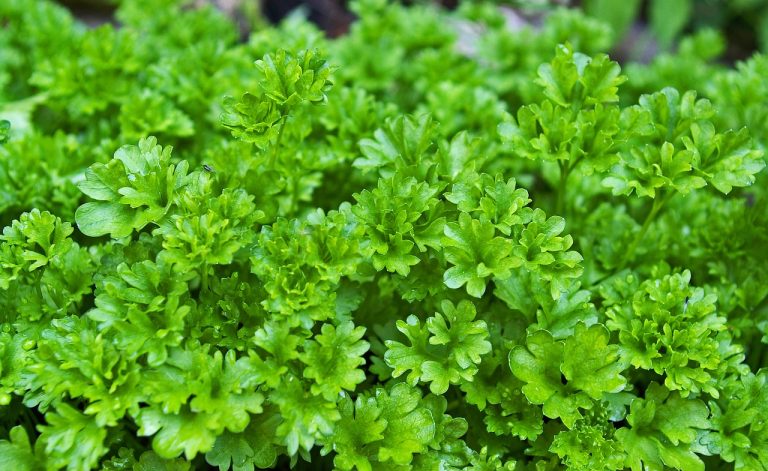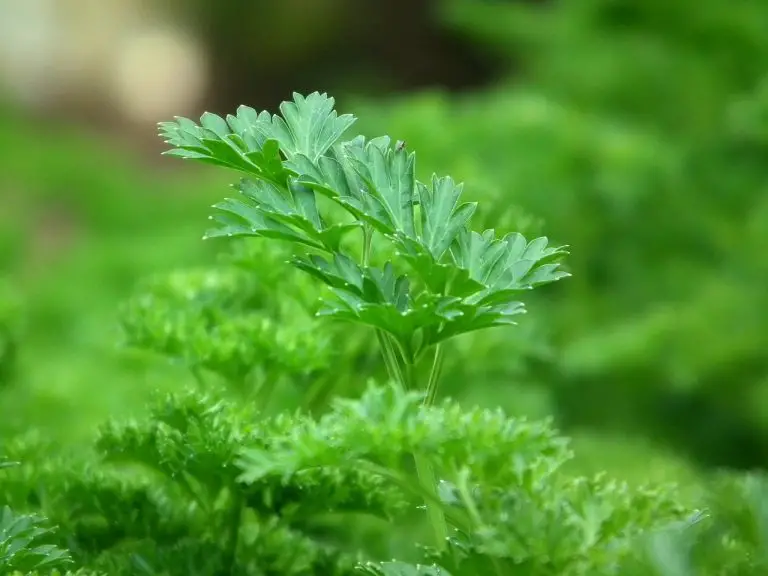Growing tomatoes indoors with artificial light has emerged as an increasingly popular and rewarding method.
By harnessing the power of advanced LED panels and high-intensity discharge (HID) grow lights, tomato enthusiasts can now create their own little greenhouse oasis by growing tomatoes indoors, irrespective of the outdoor climate or space limitations.
In this comprehensive guide, we will delve into the art and science of indoor growing, unlocking the secrets to maximizing your yield and enjoying a bountiful harvest right from the comfort of growing tomatoes indoors.
We provide comprehensive guidance on selecting the ideal determinate tomato plants and indeterminate ones based on the space you have available, as well as mastering the nuances of light intensity and color spectrums.

Tomato variety selection and light intensity
As you venture into this green endeavor, two crucial factors will significantly influence your success: the choice of tomato varieties and understanding the optimal light intensity for growing tomatoes indoors.
Pick the ideal tomato varieties for your space
Selecting the perfect tomato varieties adapted to your indoor gardening space is the first step toward a successful and fulfilling harvest.
With a plethora of options available, each boasting unique traits and flavors, it’s essential to choose wisely to ensure your plants thrive within the confines of your home.
For compact or limited spaces, dwarf or less determinate tomato plants and varieties prove to be excellent choices. These compact plants stay manageable in size and are well-suited for small containers or confined areas with potting mix.
If your indoor-growing garden benefits from ample space and vertical capacity, indeterminate tomato growing-indoors varieties might be the way to go. These vining plants have a remarkable ability to reach greater heights.
Selecting the ideal determinate tomato plants for your indoor garden involves a thoughtful blend of space considerations, personal preferences, and light requirements for growing tomatoes indoors.

HID (high-intensity discharge) grow lights
When it comes to how to grow tomatoes indoors, providing the right amount of light is paramount to their growth and development.
Designed to mimic natural sunlight, HID grow lamps have emerged as a popular choice among indoor gardeners for their ability to promote healthy plant growth throughout all stages of the tomato’s life cycle.
HID grow lamps encompass two primary types: Metal Halide (MH) and High-Pressure Sodium (HPS) lights. Metal Halide lights emit a bluish-white spectrum, ideal for stimulating vegetative growth in young tomatoes.
One of the key advantages of HID grow lamps lies in their high light intensity, which allows growing tomatoes to receive substantial luminosity even in larger indoor gardening spaces.
To ensure the best results with HID grow lamps, finding the right balance of light intensity and duration is essential.

How much light do tomato plants need indoors?
Providing the right amount of light is a fundamental factor in how to grow tomatoes indoors.
A tomato plant is considered a high-light crop, necessitating approximately 14 to 18 hours of light each day during its vegetative stage.
During this critical phase, they crave intense illumination to fuel robust leafy growth. As they transition into the flowering and fruiting stages, the light requirement slightly decreases to about 12 to 16 hours daily.
Keep in mind that distance matters too. Position the LED panel at an appropriate height from the plants, typically between 12 to 24 inches, to prevent light burn and promote even distribution.
To ensure optimal light exposure, investing in a quality full-spectrum LED panel with a dimmer function can be a game-changer.

The intensity of the full spectrum LED panel with a dimmer for each stage of growth
During the germination and seedling stage with take place mostly in seed trays, young tomato plants demand gentle yet consistent illumination. Using the dimmer feature on your LED panel allows you to regulate the light intensity to suit their delicate requirements.
Lower intensity levels at this stage prevent excessive stress on the seedlings, promoting healthy root and leaf development in seed trays.
As the tomato plants progress into the vegetative phase, they require more light to support vigorous leafy growth. Gradually increasing the LED panel’s intensity through the dimmer helps ensure they receive the energy they need to thrive.
When transitioning into the flowering and fruiting stage, a tomato plant necessitates a higher light intensity to encourage robust flower formation and produce fruit.
At this critical phase, adjusting the LED panel to its maximum intensity can contribute significantly to the quantity and quality of your tomato harvest.
Remember to monitor your plants’ response to the light adjustments, as different tomato sorts may exhibit slight variations in their light preferences.

What color grow light should I use for tomatoes?
When it comes to color options for plant grow lights, two primary choices stand out: red and blue spectrum grow lights. Both spectrums are essential for various aspects of plant development.
The red light spectrum, typically ranging from 600 to 700 nanometers, promotes flowering, fruiting, and overall plant growth. It stimulates essential processes such as photosynthesis and aids in the production of robust, flavorful tomatoes.
On the other hand, the blue light spectrum, spanning from 400 to 500 nanometers, is crucial during the vegetative phase. It encourages leafy green growth, enhancing the plant’s ability to absorb nutrients and develop a sturdy foundation.
Combining both red and blue spectrum growth lamps ensures that your tomato plant receives a balanced light spectrum throughout its growth journey.

Setting up the indoor tomato garden
Whether you have a spacious room or limited space, we’ll guide you through choosing the right LED panel, understanding its requirements, and finding the perfect spot for your tomato plant.
How to choose an LED panel for growing indoors?
When venturing into indoor gardening and looking for an LED panel, keep these essential points in mind to make an informed choice.
- Consider the light spectrum. Opt for a full spectrum LED panel that provides a wide range of wavelengths, mimicking natural sunlight.
- Energy efficiency and power consumption. Look for LED panels with high PAR values, as they offer more effective light absorption for your plants such as fluorescent lights.
- Size Matters. Determine the size of your growing area and choose an LED panel that can adequately cover all your indoor plants.
- Adjustability features. Consider LED panels with dimmers, allowing you to fine-tune the light intensity as per your plants’ specific needs or growth stages such as fluorescent bulbs.
By keeping these points in mind while selecting your LED panel, you’ll create an ideal environment for your indoor garden to flourish with healthy.

Do I need a big space to grow tomato plants indoors with an LED panel?
LED lights have revolutionized indoor gardening, offering an efficient and space-saving solution for cultivating plants in confined environments with potting mix.
Unlike traditional high-intensity discharge (HID) lights, which tend to be bulkier and emit more heat, LED panels are slim, lightweight, and emit very little heat.
This characteristic allows growers to position the LED panels much closer to the plants without risking heat damage.
As a result, vertical space can be effectively used, making it possible to successfully grow tomatoes indoors even in compact living spaces or apartments with limited room for traditional gardens with potting mix.
Vertical gardening with LED panels opens up exciting possibilities for using wall space, shelving units, or vertical stands to create a thriving tomato garden.
With the strategic placement of the LED panel, you can maximize every inch of your available space.

Placement: sunny window or grow lights
Two primary options emerge as the top contenders: the sun-kissed windowsill and the high-tech world of grow lamps.
Placing your tomato plant on a sunny windowsill seems like the most natural choice, as it allows them to bask in the warmth of natural sunlight.
Sunlight is, after all, the primary source of energy for growing tomatoes indoors, with their sun-loving nature, relish direct sunlight.
Yet, windowsill placement might not always guarantee consistent sunlight throughout the day, especially in areas with limited daylight hours or obstructed views.
LED lights, for instance, have gained popularity for their energy efficiency, spectrum adjustability, and low heat emission.
They can be tailored to cater specifically to the needs of each growth stage, promoting optimal development and accelerated yields.
The ideal placement for your indoor tomato seeds lies in striking a harmonious equilibrium between natural light and artificial tomato grow lights.
If you choose a grow light setup, situating it near a window can provide a valuable combination of natural and artificial light.
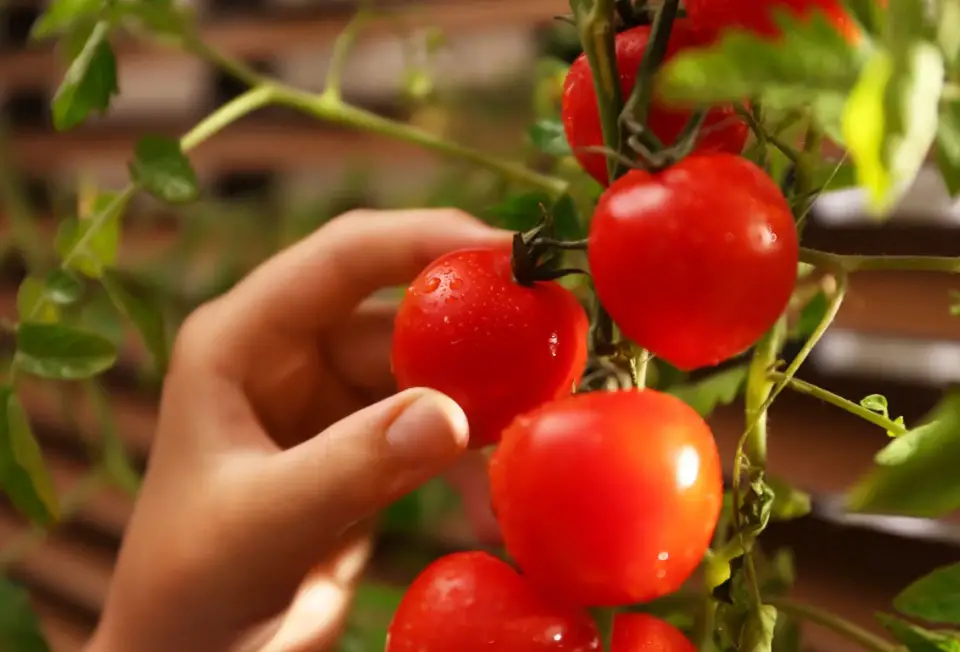
Can I leave my grow light on 24/7?
While it might seem beneficial to offer your tomato plants a constant source of light, doing so can have adverse effects on their overall health and development.
Constant exposure to light without a break can disrupt this natural cycle, leading to stress and decreased vitality in the plants.
Instead of keeping the grow light on 24/7, consider implementing a consistent light schedule. Aim for around 12 to 16 hours of light per day, followed by 8 to 12 hours of darkness.
This balanced approach will help your tomatoes thrive without compromising their biological needs.
Nurturing and caring for indoor tomato plants
From understanding the optimal light duration to mastering the art of watering, we’ll guide you through the process of tending to your tomato plant with expertise and care.
Seed trays
These containers serve as the first home for your future tomato plants.
Opt for trays that offer adequate drainage to prevent waterlogged soil, as excessive moisture can hamper the development of delicate tomato seedlings.
Gently place the tomato seeds at the recommended depth, covering them with a light layer of the potting mix.
The seed trays serve as more than just vessels for your indoor tomatoes; they represent the promise of new life and a bountiful harvest to come.
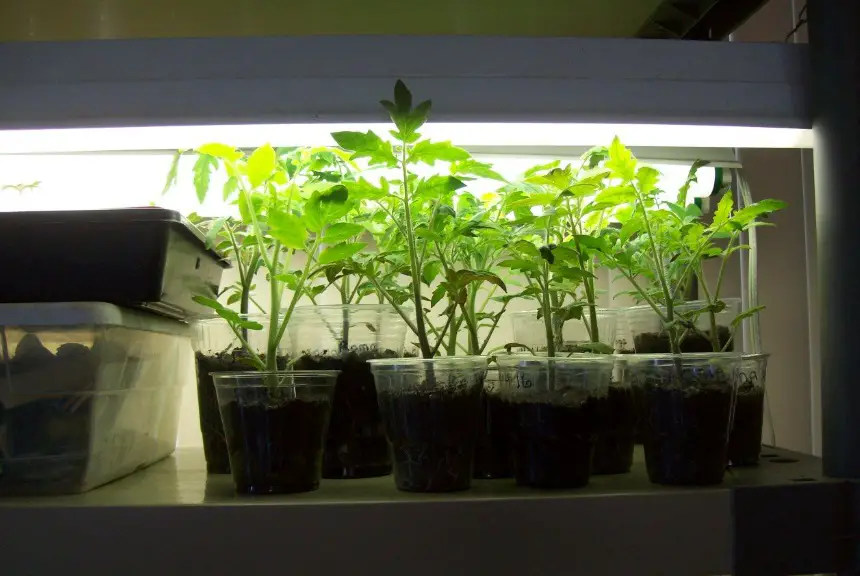
Water your tomato plants
Proper watering is the lifeblood of any successful indoor tomato garden. Just like natural light and nutrients, water plays a crucial role in the growth and overall health of your tomato plants.
Tomatoes thrive when the soil remains evenly moist, but not waterlogged. Overwatering can lead to root rot and other moisture-related issues, while underwatering can stunt growth and result in small, lackluster fruits.
To ensure your tomatoes receive the right amount of water, pay attention to the soil’s moisture content.
Stick your finger about an inch deep into the soil, near the base of the plant. If the soil feels dry, it’s time to water.
The best watering practice is to water at the base of the plants rather than overhead. Drenching the foliage with water might increase the risk of disease and mold development.
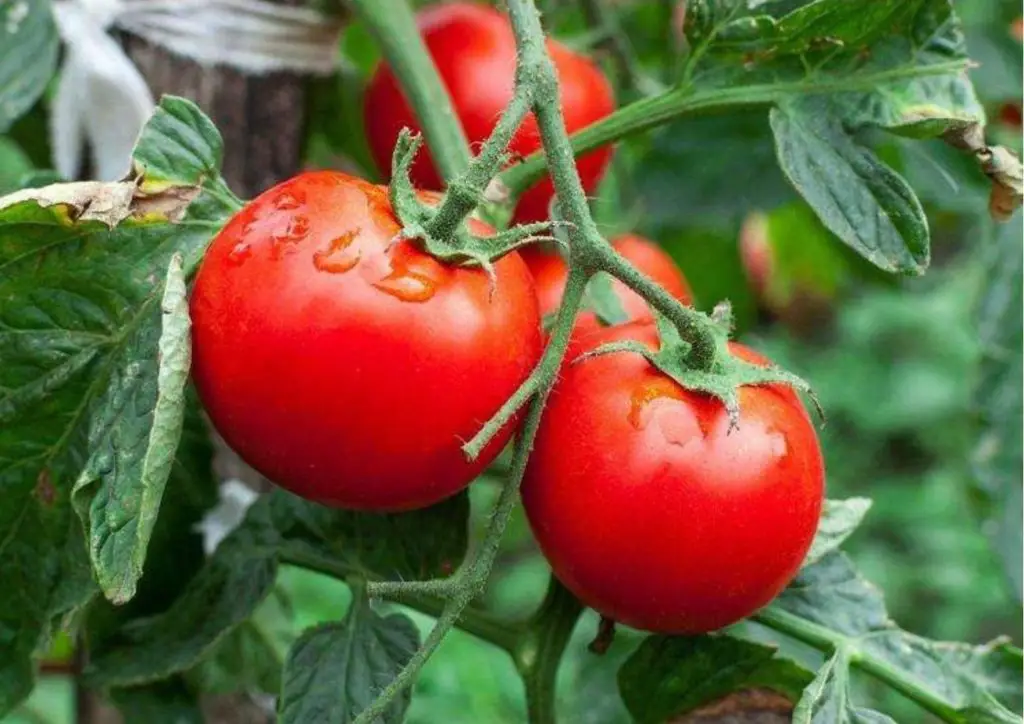
How long does it take to grow tomatoes indoors?
Typically, the growth cycle of tomatoes spans around 60 to 80 days from the moment of planting tomato seeds or transplanting seedlings into the soil.
Factors such as temperature, humidity, and light exposure can influence the rate of growth and affect when you can expect to harvest your ripe tomatoes.
Varieties of tomatoes play a significant role in determining the growing period.
The cultivation method you employ also influences the time required for tomatoes to develop fully.
FAQ
Will tomatoes grow in artificial light?
Absolutely! Tomatoes can indeed flourish under artificial light, making indoor gardening a viable and efficient option for cultivating these luscious vegetables.
Can you grow tomatoes indoors with LED lights?
Absolutely! You can grow tomatoes indoors with LED lights has proven to be a highly successful and popular method of how to grow tomatoes indoors among horticulturists and gardening enthusiasts.
How many hours of artificial light do tomato plants need?
On average, tomato plants require approximately 12 to 16 hours of artificial light per day to mimic natural sunlight adequately.
What light is best for indoor tomatoes?
Among the various options available, LED grow lamps stand out as the optimal choice for their versatility and efficiency.
Conclusion
As you can see, growing tomatoes indoors with artificial light is completely possible. By carefully selecting the ideal tomato sorts and ensuring the right light intensity using HID or LED grow lights, one can cultivate a bountiful indoor garden regardless of available space.
Understanding the lighting requirements, including the hours of light needed and the importance of a well-balanced spectrum, will lead to healthy and productive tomato plant growth.
With dedication and attention to detail, anyone can enjoy the joy and satisfaction of harvesting flavorful tomatoes year-round, right in the comfort of their own home.

